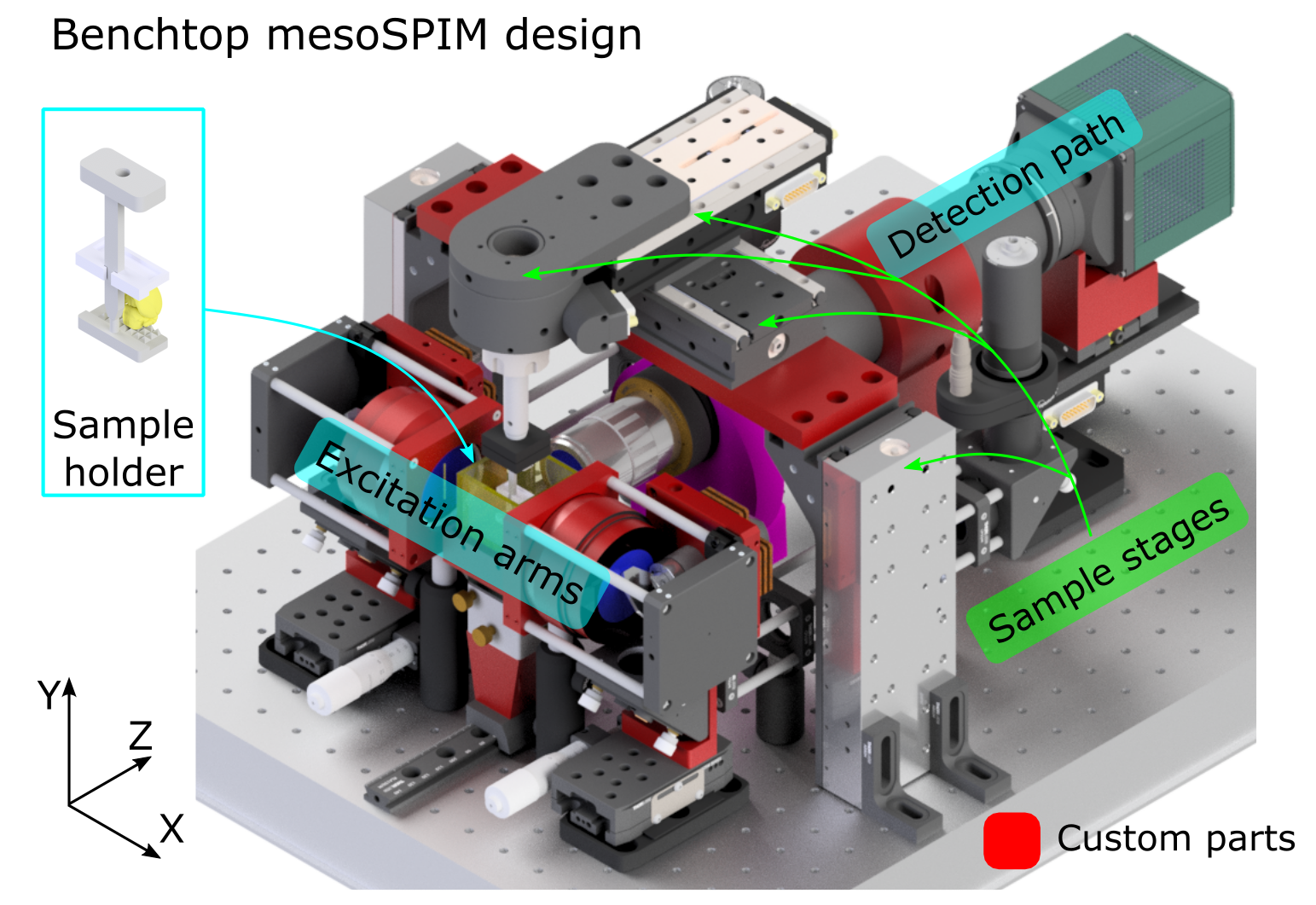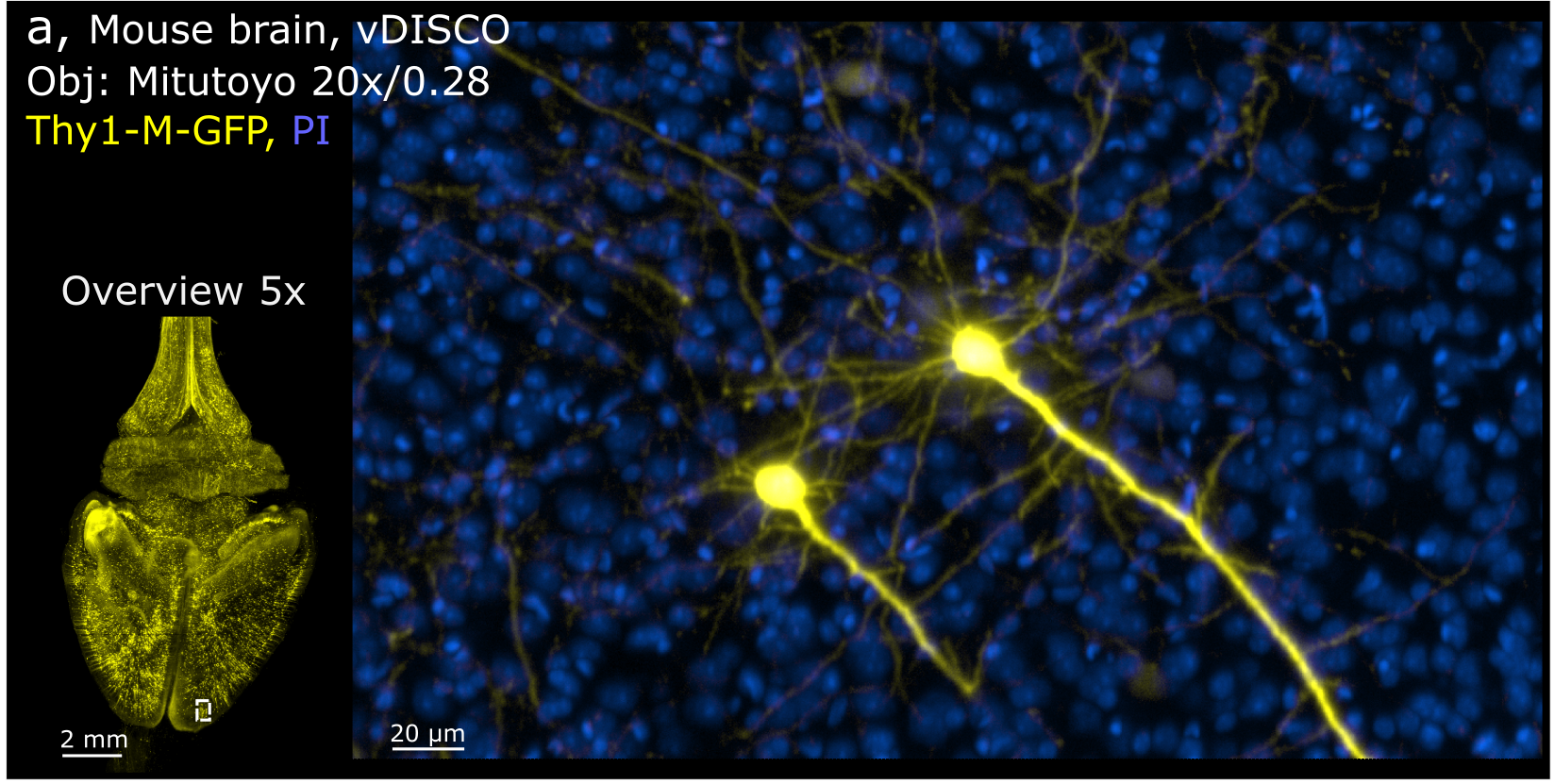Navigation auf uzh.ch
Navigation auf uzh.ch
The “mesoscale selective plane illumination microscopy” (mesoSPIM) Initiative has reached a new milestones this summer: A new portable microscope is ready to be used and the old microscope was equipped with improved optics to create 3D images of even higher quality than before. Since its inception in 2015, the project pioneered open source light-sheet microscopy of cleared tissues, freely sharing the knowledge on how to build own facility-grade instruments. Since 2021, the mesoSPIM project is integrated in the URPP AdaBD as a platform. The Coordinating Office of the URPP AdaBD discussed with Dr. Nikita Vladimirov, manager of the platform, the path and future of the mesoSPIM project.

“Human imagination works in 3D,” explains Nikita Vladimirov. “Which is why exploring 3D images interactively makes it easier to understand objects in their context.” This lies at the heart of the mesoSPIM Initiative: Through a laser scanning technique the mesoSPIM microscope creates 3D images of chemically cleared tissues without cutting them into slices. It makes use of the light-sheet technology, which revolutionized microscopy over the last twenty years and enables to illuminate only a thin slice of the sample, creating images of large tissues that are impossible to tackle with traditional, non-light-sheet microscopes. The mesoSPIM Initiative utilizes protocols to chemically clear samples to make them optically transparent (almost like glass) and amenable for deep imaging using the light-sheet technique.
Since the inception of the initiative in 2015 by Fabian Voigt in the lab of AdaBD Co-Director Fritjof Helmchen (Brain Research Institute), over 20 mesoSPIM microscopes have been built around the world to create 3D scans of samples in a wide variety of biomedical applications. From a chunk of brain from a deceased 100-year old donor (University of Maastricht, Netherlands) to irradiated crystals that can serve as detectors in a search for dark matter particles (Physics Institute, UZH), the mesoSPIM microscopes continuously find new applications. N. Vladimirov explains: “That’s the beauty of the project. We at the mesoSPIM Initiative offer open-source blueprints and code how to build and operate such a microscope, but everyone is free to use and modify their system for their purposes.” This also makes it more sustainable than traditional systems, because it allows the users to troubleshoot the microscope, upgrade their system at low cost, or reuse parts of the microscope if they want to build a new one.

“Our own setups are not static systems, as we constantly develop and improve them.” On July 2023, the mesoSPIM platform upgraded the old microscope at the Center of Microscopy and Data analysis (ZMB) with a new-generation camera with larger sensor and with new objectives that are compatible with these sensors, “which makes the new microscope a real powerhouse, capable of generating several terabytes of high-quality images in a single day” says N. Vladimirov.
An even bigger milestone of the mesoSPIM initiative was the creation of the “Benchtop” mesoSPIM microscope, which is smaller, cheaper and easier to build than its predecessor, and can be shipped to a collaborating institute or a workshop. The Benchtop design is also financially attractive for small labs, since it only costs a third of a similar commercially available light-sheet microscope, and half of the previous-generation mesoSPIM. This new system has been made accessible to AdaBD members this summer.
In June, the platform published as preprint describing the design of the Benchtop and application examples. The manuscript is currently under review in a high-profile journal, but it has already been noticed by other research groups. The optical testing method that was developed for it has already been adapted by the Allen Institute for their latest light-sheet microscope. Such free sharing of ideas and methods before the official publication greatly accelerates the development of new instruments.
Apart from the microscope itself, the mesoSPIM Initiative aims to be a multifaceted project, supporting a growing group of users around the world. N. Vladimirov expects that the mesoSPIM Inititative will grow a lot in the next years, and that the 3D light-sheet microscopy of chemically cleared tissues will become mainstream. ”Many researchers are still unaware how easy it is to chemically clear and 3D image a large specimen with our microscopes. We can clear and 3D image even an entire mouse with single-cell resolution, which is a game changer for many anatomical studies”, says N. Vladimirov. “As more and more people realize this, mesoSPIM is quickly becoming a standard technique.” Towards this goal, he plans to work more on development of documentation, outreach, support and training, and the control software, so that more scientists know about the microscope and can build and use it with minimal training.

To meet the growing workload, since September 2023 the URPP AdaBD hired an additional scientific staff member, Dr. Marco Garbelli, who focuses on tissue clearing and samples preparation, imaging, and user support. Welcome!
For information on the mesoSPIM Initiative please visit: https://mesospim.org/ and follow us on X (Twitter) @mesoSPIM and YouTube https://www.youtube.com/@mesoSPIM.